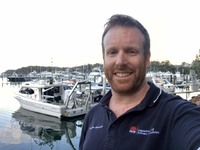Behind the science:
Taking a deeper look: Quantifying the differences in fish assemblag...
2020, February 21
Posted by Veronica Radice
Fields
Behavior
Biodiversity
Community structure
Ecology
Fisheries
Focusgroups
Fishes
Locations
Australia - Southeastern Australia
Platforms
Baited Remote Underwater Video (BRUV)
“Spatial distribution of fish assemblages across mesophotic rocky reefs”
What was the most challenging aspect of your study (can be anything from field, lab to analysis)?
Negotiating with mother nature. Going offshore in an 8m boat and deploying expensive scientific equipment meant there had to be low wind, low swell and low current and have staff and volunteers available. This combination of factors only occurs approximately a dozen times a year. This part of the Australian coastline that I work in is highly exposed to the East Australian Current that operates 5 months of the year and the water can be moving faster than 2 knots. Having said that, being such a dynamic ecosystem makes working in this area so exciting and provides plenty of ecological questions to explore.
What was the most memorable moment in undertaking this study?
Whenever we get into the field. Especially when we are going to areas that have never been explored. There is definitely something in the human nature that loves exploring new areas. The most exciting times are when we retrieve a baited remote underwater video (BRUV) and it has landed upright, with amazing reef in view and we see large numbers of fish or a tiger shark. Probably the most memorable moment was when we retrieved the first BRUV from mesophotic depths and captured the scene in the first photo.
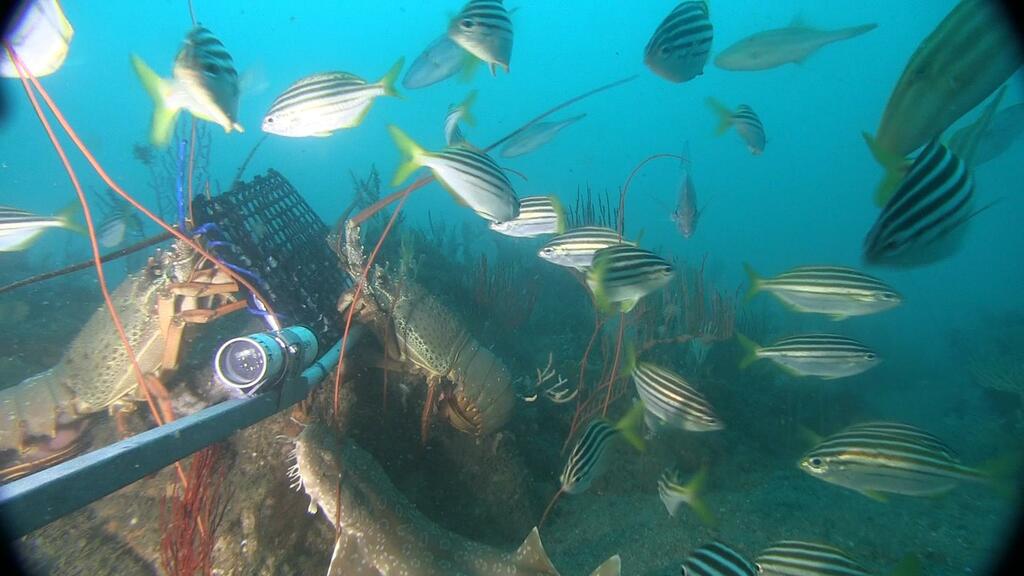 Mesophotic reef in 85m of water at Seal Rocks, NSW, Australia. This is the typical fish assemblage we see in this region including a couple of large eastern rock lobsters.
(C) Joel Williams
[CC BY-NC 4.0]
Mesophotic reef in 85m of water at Seal Rocks, NSW, Australia. This is the typical fish assemblage we see in this region including a couple of large eastern rock lobsters.
(C) Joel Williams
[CC BY-NC 4.0]
What was your favorite research site in this study and why?
Seal Rocks (~2.5 hours north of Sydney) has some spectacular temperate mesophotic reef covered in soft corals and sponges. The fish life is always and amazing and nearly every survey we see a species that is new to our study. Seal Rocks is an interesting area oceanographic wise as the East Australia Current comes close to shore and creates some interesting features.
Other than your co-authors, with whom would you like to share credit for this work?
As with most studies this work could not have been completed without the assistance of many staff from NSW Department of Primary Industries and volunteers. Scott Foster’s paper and SOP on spatially balanced random study designs and the MBHdesign R package helped us establish where we were to sample. Both internal and external reviewers provided very useful suggestions that helped make this paper much stronger. This research was funded by the National Environment Science Program Marine Biodiversity Hub and with the support and guidance of Parks Australia.
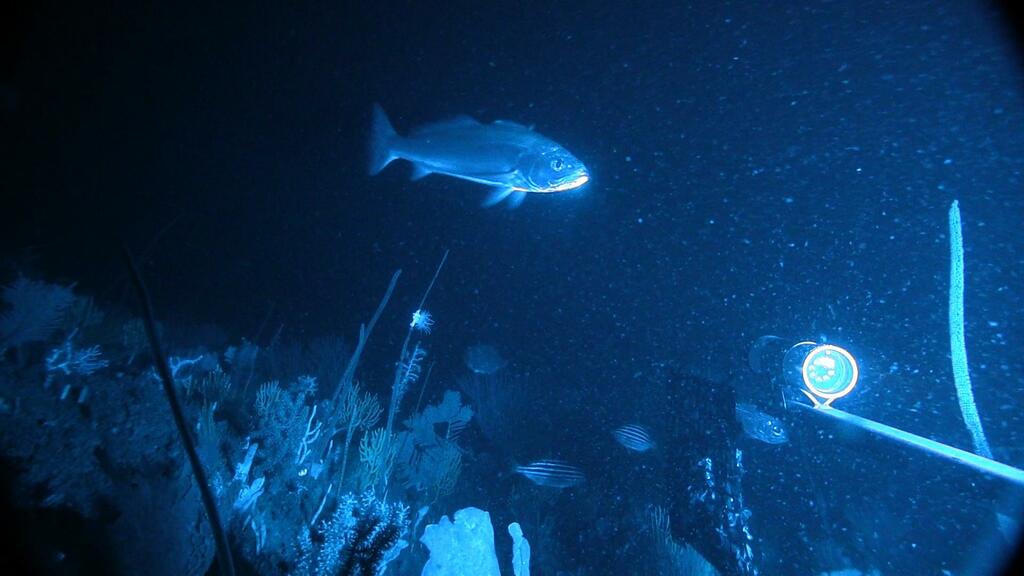 An example of the mesophotic reef in the Hunter Marine Park with a 65cm Teraglin, Atractoscion aequidens cruising through the field of view.
(C) Joel Williams
[CC BY-NC 4.0]
An example of the mesophotic reef in the Hunter Marine Park with a 65cm Teraglin, Atractoscion aequidens cruising through the field of view.
(C) Joel Williams
[CC BY-NC 4.0]
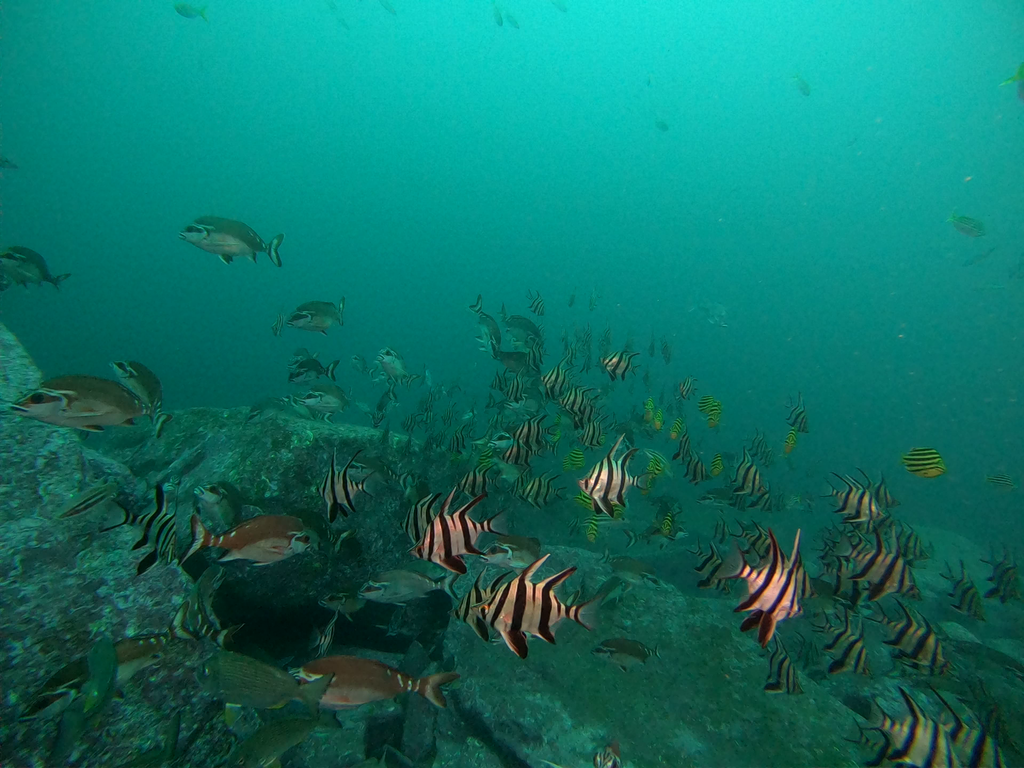 A large mixed species school of fishes in the upper mesophotic zone in the Hunter Marine Park, 50m. Including red morwong Morwong fuscus, old wives Enoplosus armatus, yellow fin bream Acanthopagrus australis, stripy Microcanthus strigatus, mado Atypichthys strigatus.
(C) Joel Williams
[CC BY-NC 4.0]
A large mixed species school of fishes in the upper mesophotic zone in the Hunter Marine Park, 50m. Including red morwong Morwong fuscus, old wives Enoplosus armatus, yellow fin bream Acanthopagrus australis, stripy Microcanthus strigatus, mado Atypichthys strigatus.
(C) Joel Williams
[CC BY-NC 4.0]
Any important lessons learned (through mistakes, experience or methodological advances)?
When working in mesophotic depths everything takes longer than when working in shallower systems! For example we were only achieving 12 baited remote underwater video (BRUV) deployments on a good day, compared with 24 – 30 deployments when working in shallower 20-40m depths. Therefore, allow extra days in fieldwork plans and always be prepared and take advantage of good weather windows. It was also highly beneficial to have mapped the area prior to sampling as we were able to distinguish areas of reef and develop a scientifically sound sampling program.
Can we expect any follow-up on this work?
Yes, we have gone back and sampled the same areas three more times to investigate temporal patterns and further explore the fish assemblage and habitat relationship. We have also been using an ROV as a complementary method to conduct fish and habitat surveys.
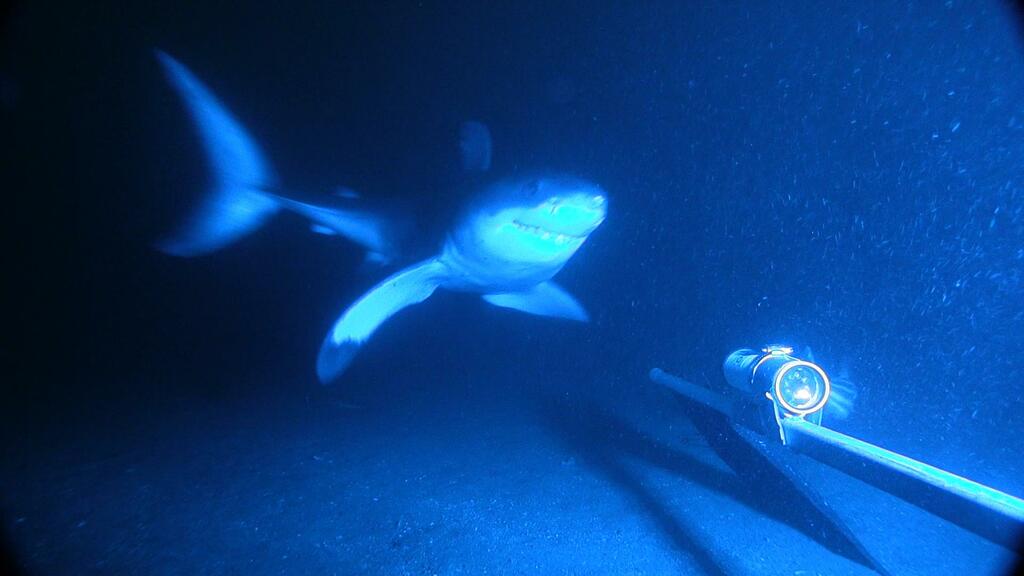 Everyone loves a BRUV shark screen shot and this is my favourite, a white shark Carcharodon carcharias in the Hunter Marine Park, 100m. This shark measured in at 1.2m, which means it was recently born. Look at how cute that smile is, how could anyone be scared of these guys.
(C) Joel Williams
[CC BY-NC 4.0]
Everyone loves a BRUV shark screen shot and this is my favourite, a white shark Carcharodon carcharias in the Hunter Marine Park, 100m. This shark measured in at 1.2m, which means it was recently born. Look at how cute that smile is, how could anyone be scared of these guys.
(C) Joel Williams
[CC BY-NC 4.0]
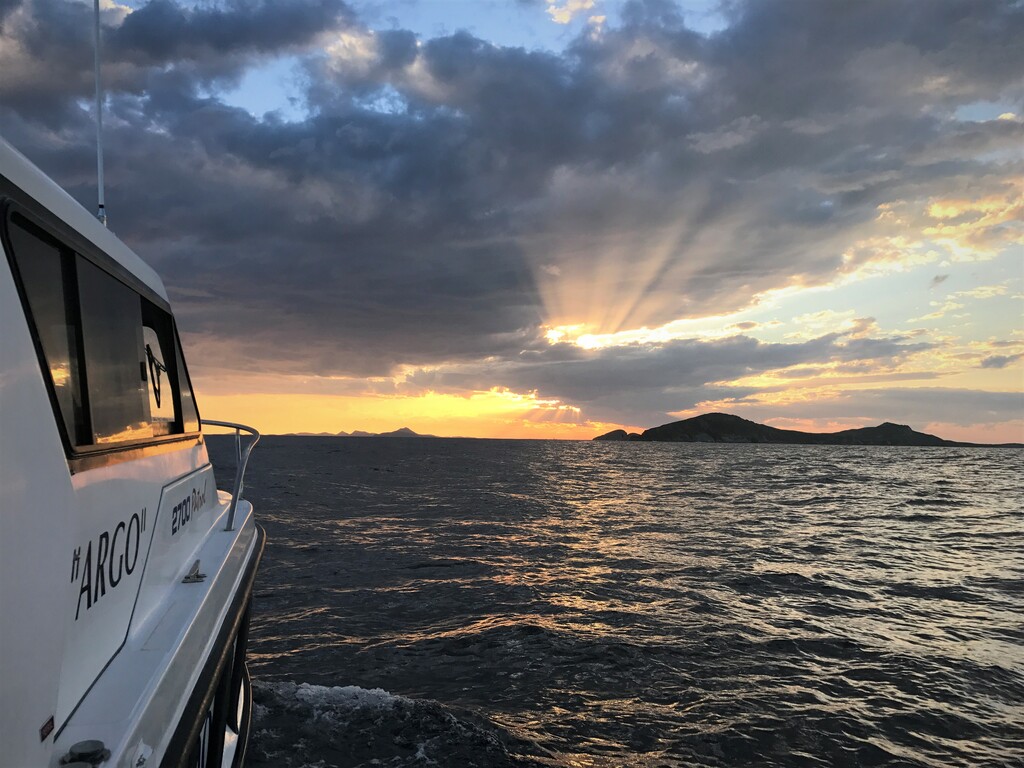 Heading home after a long day in the field. We would often get amazing sunsets on one hour boat ride home.
(C) Joel Williams
[CC BY-NC 4.0]
Heading home after a long day in the field. We would often get amazing sunsets on one hour boat ride home.
(C) Joel Williams
[CC BY-NC 4.0]
Featured article:
|
|
Taking a deeper look: Quantifying the differences in fish assemblages between shallow and mesophotic temperate rocky reefs | article Williams J, Jordan A, Harasti D, Davies P, Ingleton T (2019) PLoS ONE 14:e0206778 |

|
